Table of Contents
Adapting inbounding marketing strategies benefits organizations, particularly tech firms, since their target audience extends well beyond their geographic borders. As a consequence, inbound marketing is an effective strategy for increasing brand recognition.
It’s one of the most effective ways for IT firms to grow sales and expand their brand’s reach.
To increase audience engagement and hence company development, it is necessary to use relevant content. Thus, although firms may benefit significantly from inbound marketing, they must adhere to a few best practices.
For tech firms, the following established inbound marketing tactics are helpful:
Stats and Facts Tech Marketers Can’t Ignore
- Content marketing generates three times the number of leads as conventional marketing and costs 62% less.
- Websites that prioritize content marketing may generate six times the conversions of those that do not.
- Over 46% of B2B marketers say that inbound marketing generates a greater return on investment than outbound techniques.
- According to 59% of pros, inbound marketing generates higher-quality sales leads.
- The most successful marketing professionals report spending around 39% of their entire promotional expenses on content.
- In recent years, demand for infographics has surged by an astounding 800 percent.
Inbound Marketing Strategies for Tech Companies
We’re now going to go deep into how tech firms may prosper using some of the most effective inbound marketing techniques available today.
Again, your brand must use a mix of all of these strategies to ensure that your promotional efforts are comprehensive. You may evaluate the outcomes of each and then refine and enhance your process in the future.
Blogging
When it comes to blogging about your technological goods or services, you have two primary alternatives. To begin, your marketing team may create informative blog entries for publication on your website.
Second, you may utilize the guest blogging strategy to arrange for the content to appear on other websites with hyperlinks to your domain. Both are necessary for success, and the latter will also aid in search engine optimization.
Why use blogging as part of your inbound strategy?
- Blogging is ideal for in-depth content.
Long-form material (like to this piece) that exceeds 2000 words does well, and as Google notes, more than 10% of a web user’s daily information queries will be for a broad topic matter that needs long articles.
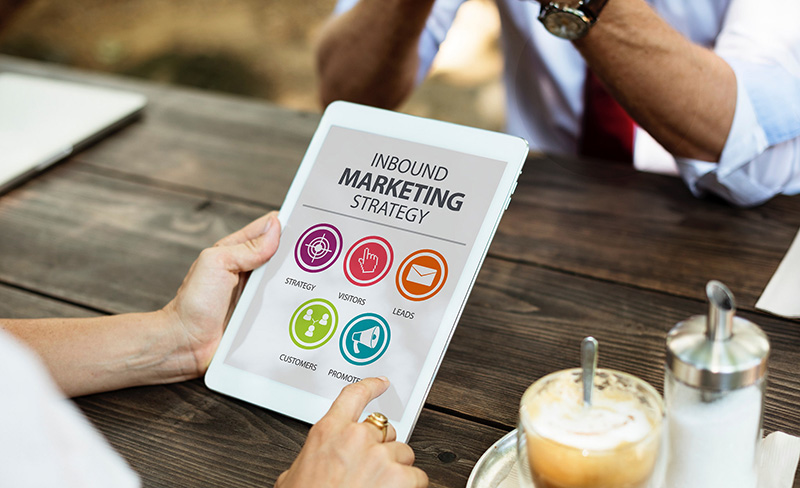
- Internet users trust the material on blogs.
By writing blog articles, your technology firm may connect with prospective clients and consumers on a more personal level. Your website might sometimes give the impression that your brand is a faceless organization. While it may seem robotic and sterile at first, adding some thoughtfully crafted blog articles can inject much-needed personality into your brand and provide a chance to highlight the value of your goods and services.
- Blogging generates an INCREDIBLE amount of traffic.
According to research, around 75% of those who use Google will never go beyond the first page of results. Blogging helps your technology brand to develop content around your most relevant keywords, increasing the likelihood of your platform being listed towards the top of the search results.
Social Media
Attracting new and current consumers is a critical component of every IT company’s inbound marketing strategy. Facebook, Twitter, Instagram, and even LinkedIn are all excellent tools for attaining that goal.
With 100 Twitter followers, brands may generate 106 percent more traffic to their websites than companies with fewer than 25.
Eighty-seven percent of B2B marketers utilize social media in some capacity.
Social media increases a business’s lead-to-sale ratio by at least 100%.
Why use social media as part of your inbound strategy?
- Increasing the number of new readers and visits to your website
According to the most recent figures, there are around 2.6 billion individuals active on Facebook at present. Where else can you put your tech brand in front of such a large number of internet users for free? Nowhere! By constantly updating your social media profiles and sharing links to blog articles and other information, you may attract new prospective consumers and clients from all over the globe to your technology brand.
- Interactions with prospective clients
Social media platforms are fantastic for conversing with and interacting with prospective consumers before converting them to leads and conversions. Tech marketing teams may answer inquiries, give information, and initiate discussions with actual individuals who may or may not choose to invest in their goods and services in the future. Additionally, this is an excellent strategy for establishing brand authority.
- Ability to target paid adverts to relevant groups
The major social media networks now allow users to run sponsored advertisements with an unbelievable variety of targeting choices. Because there is no minimum commitment, tech businesses may experiment with various low-cost advertisement techniques until they discover something that works.

Automated Marketing
Marketing automation is an extraordinarily effective method for increasing the efficiency and scalability of your marketing initiatives.
Not only can it save you time, but the insights and data that platforms like HubSpot can give may arm marketing and sales teams with actionable insights and data that can result in tangible outcomes.
An extra 21% of marketing leaders want to employ a marketing automation platform within two years.
Automation of the lead-generating process is a crucial problem for 30% of businesses.
45% of agencies use marketing automation systems to demonstrate ROI, and 42% use marketing automation to track performance.
Over the last 18 months, 60% of B2B marketers report increasing their attention on target segmentation and persona development.
Why use automated marketing as part of your inbound strategy?
When utilized appropriately, marketing automation may provide significant benefits at a scale well beyond what you could do independently.
- Alignment of marketing and sales
A bird’s eye perspective of your company’s sales and marketing data may help your teams work more effectively together.
- Streamline your procedures
A bird’s eye perspective of your company’s sales and marketing data may help your teams work more effectively together. The value of sales and marketing communicating with one another and collaborating to improve one another’s operations
- Make your marketing more targeted.
Marketing automation may help you achieve more efficiency in your marketing and sales efforts. With Account-Based Marketing (ABM) on the increase and marketing becoming more targeted, you may begin to see some impressive ROI from marketing.
SEO
Search engine optimization (SEO) can guarantee that your technology website and its content appear at the top of Google and other search engine results pages for your targeted keywords. Not only can a successful SEO strategy assist in enhancing brand recognition, but it will also increase traffic and guarantee that more website visitors are from your target market.
Organic search accounts for more than 94% of all site traffic.
Links that rank first on Google have a click-through rate of around 35% greater than those featured on the first page.
Ninety-three percent of online encounters begin with a search engine such as Google. Each day, Internet users worldwide do 6,586,013,574 searches.
Why use SEO as part of your inbound strategy?
SEO is critical for inbound marketing since it is the primary tool for ensuring that new prospects and clients find and share your content. Without a good SEO plan, your articles, blog posts, videos, and other content may not get the attention they deserve.
- Acquiring more website visitors
Within a few short weeks, technology businesses implementing SEO best practices will observe a significant rise in website traffic. Not only will you increase the number of visits to your site, but those visitors should have a genuine interest in the goods, services, or information provided by your company—increased relevance of traffic results in increased lead and conversion rates.
- A cost-effective technique
In most cases, SEO is cost-efficient since your business will actively target customers who are already interested in your goods or services. On the other hand, outbound tactics like cold phoning are costly and have a poor success rate.
- Enhancing your website’s usability
Adhering to SEO best practices will guarantee that search engine spiders have no difficulty navigating and comprehending your web platform. However, it should also imply simplifying the process of exploring your website and completing purchases for any genuine customers that come across your business.
Creating mailing lists from the information provided by leads is critical for inbound marketing. It is possible to increase website traffic, inform current consumers about new items or news, and connect.
Fifty-nine percent of marketers think that email is the most effective method for revenue creation, with welcome emails generating 320 percent more income than other promotional communications.
Customers who make purchases as a result of email marketing spend an average of 138 percent more.
Eighty percent of merchants believe email is the most effective method of retaining customers.
Why use email as part of your inbound strategy?
- Simple to quantify your results
Email marketing is a marketer’s fantasy since it enables the measurement of an enormous variety of distinct KPIs. Everything from delivery and open rates to clicks and subscriptions may be easily tracked. Evaluating the efficacy of each email is straightforward, and your market team can utilize the data to make future changes.
- Possibility of rapid results
One of the most appealing aspects of sending marketing emails to prospects is the possibility of quick results. Because most individuals read their email numerous times each day, IT businesses can generate a near-instant boost in relevant traffic.
Utilize a service such as Google Analytics to calculate the number of people that arrived on your website due to clicking on links in each email you send.
- Concentrating on specific customer segments
By segmenting your email marketing list according to personas and targeted niches, your company may deliver messages to the buyer groups most likely to engage with the content.
Inbound Marketing Case Studies
Here are some of the most innovative technology businesses that are using inbound marketing.
GE on Pinterest
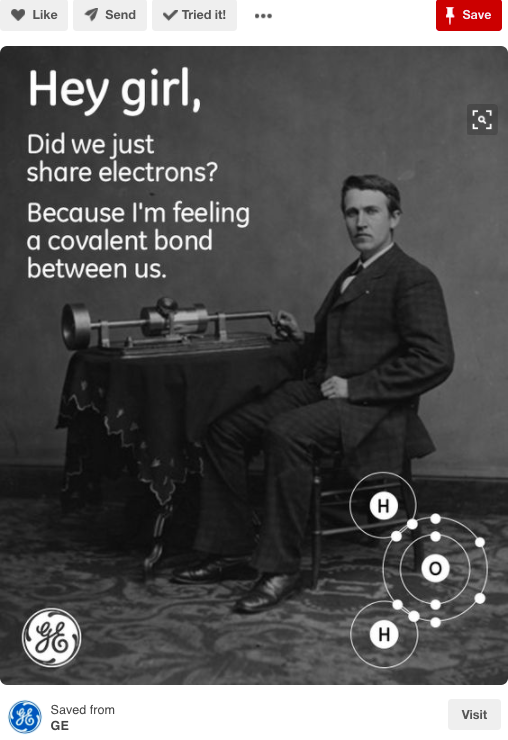
GE’s profile on Pinterest Pinterest brings up ideas of cupcake recipes and home décor, not of equipment and scientific truths. Nonetheless, GE has established a presence on the network, amassing over 27,000 followers and roughly 40 specialized boards.
One of the brand’s most popular Pinterest boards is “Hey Girl,” a parody of the famous Ryan Gosling meme.
Instead of using photos of the actor delivering feminist pickup lines, GE used visuals of Thomas Edison delivering science-themed pickup lines. For instance, this one created almost 3.2K Pins.
Two different notable boards are “Badass Machines,” which features “GE’s greatest and worst technology,” and “DIY Science.” The latter was used for advertising General Electric’s multi-platform #6SecondScience Fair, explicitly built for Vine.
For instance, this page demonstrates how to inflate a balloon using vinegar, baking soda, and a plastic bottle. It produced more than 5.8K Pins.
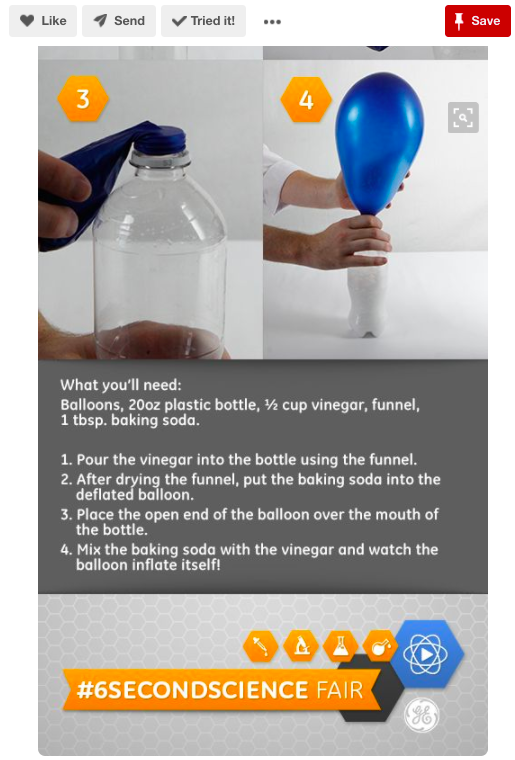
The brand’s innovative approach to Pinterest marketing won them a position as a finalist in both the Digiday Content Marketing Awards and the Shorty Awards.
Key takeaway:
- Take calculated chances with new platforms. If you believe a specific network is not a good fit for your company, consider exploring innovative methods to communicate your message. You may come across surprising strategies that may help you stand out from the competitors.
Cisco
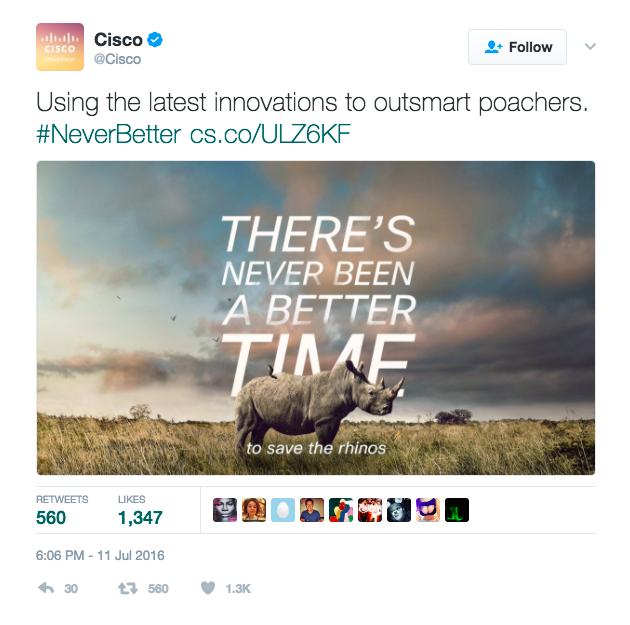
Cisco is sparking good change in a society filled with political disagreements and catastrophic news. The company’s most recent campaign, “There’s Never Been a Better Time,” pushes the premise that technology can aid in the resolution of some of the world’s most pressing problems.
As Cisco CMO Karen Walker put it, “predictions indicate that within five years, digital disruption will oust roughly four out of every ten market leaders.” While this is a period of unprecedented upheaval, it is also a period of exceptional opportunity.
“Cisco is communicating its message through television commercials, a dedicated content portal, and social media outreach—most notably on Twitter. The firm utilizes the hashtag #NeverBetter to convey actual tales about positively impacting people’s lives.
Cisco, for example, collaborates with essential partners to give technical assistance during humanitarian situations and protect endangered wildlife in Africa.
This ad lifts the veil and demonstrates how Cisco is making an impact throughout the globe.
The brand even enlisted the assistance of partners, providing them with unparalleled access to campaign materials such as marketing training courses and digital playbooks.
Key takeaway:
- Create a community centered on a shared purpose. If your business is passionate about something and you believe others are, share it with them. Let your audience know how you’re making a difference in the world, provide them with the tools to do the same, and invite them to share their tales. This will assist in humanizing your brand and initiating critical interaction with your consumers.
IBM
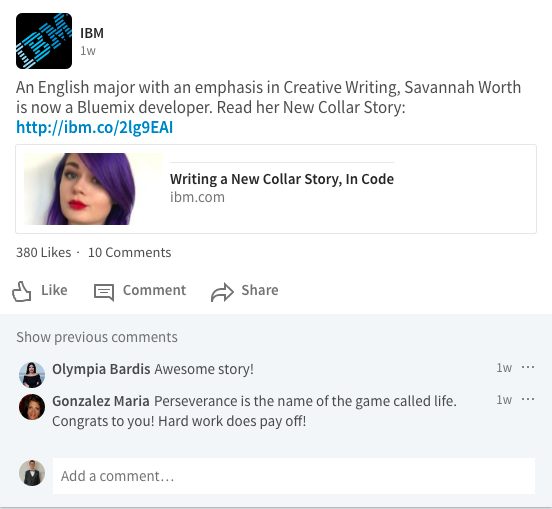
IBM was designated one of the most prominent technology brands on LinkedIn with over three million followers. The IT business utilizes its website to provide corporate news, sneak peeks at new products, and staff anecdotes.
IBM also makes use of practically every feature available on LinkedIn. For instance, they provide more than ten Showcase Pages highlighting various IBM products and services, including IBM Cloud, IBM Watson, and IBM Internet of Things.
Each page has thousands — and in some cases, up to 80,000 — of followers. They also have a dedicated page highlighting business culture, complete with images and videos, cultural insights, and employee-authored blog pieces.
IBM is hardly the only company to use these techniques. According to LinkedIn, 100 percent of the world’s largest technology companies use the network to communicate corporate information and urge workers to do the same.
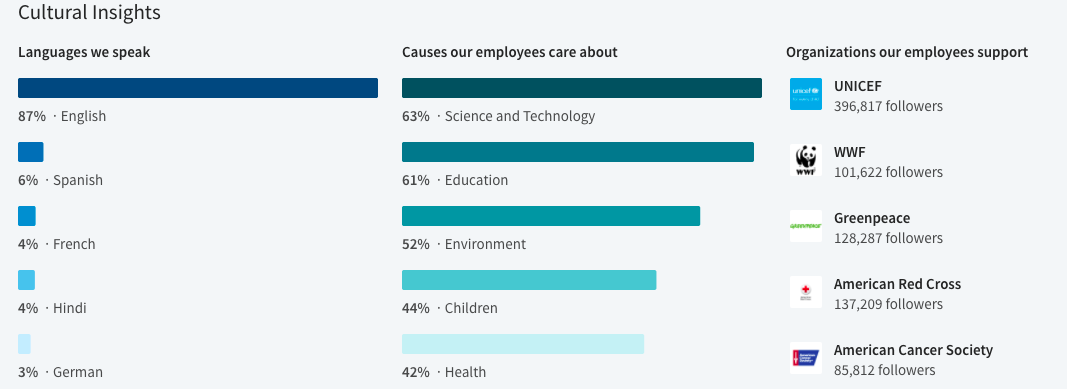
Key takeaway:
- Emphasize your company’s culture. Customers, like job hunters, want a behind-the-scenes peek at your firm. They want to know that your staff is enthusiastic about their work and the solutions they generate, not simply about selling a product.
Microsoft

Microsoft may sell software, but their Instagram content is entirely focused on actual people.
The company established its worldwide account in 2014—four years after Instagram started—with a deliberate strategy: highlight incredible stories about individuals who utilize Microsoft technology to pursue their interests and affect change.
Instagram put together a team to travel the globe and meet genuine Microsoft customers doing extraordinary things.
They then used the hashtag #DoMore to share their images, videos, and tales on Instagram. For example, their first article features Laila Ghanbari, a barista who utilizes Skype to share her expertise with businesses worldwide.
With over 900,000 Instagram followers, Microsoft encourages its fans to post their tales about individuals doing incredible things. This enables them to promote the #DoMore message, collect user-generated content, and deepen client relationships.
Key takeaway:
- Commemorate your consumers’ interests and passions. These are the folks for whom you design things, and they are the ones who perform research on prospective clients. Then, find unique methods to tell and share their tales with your audience.
HP
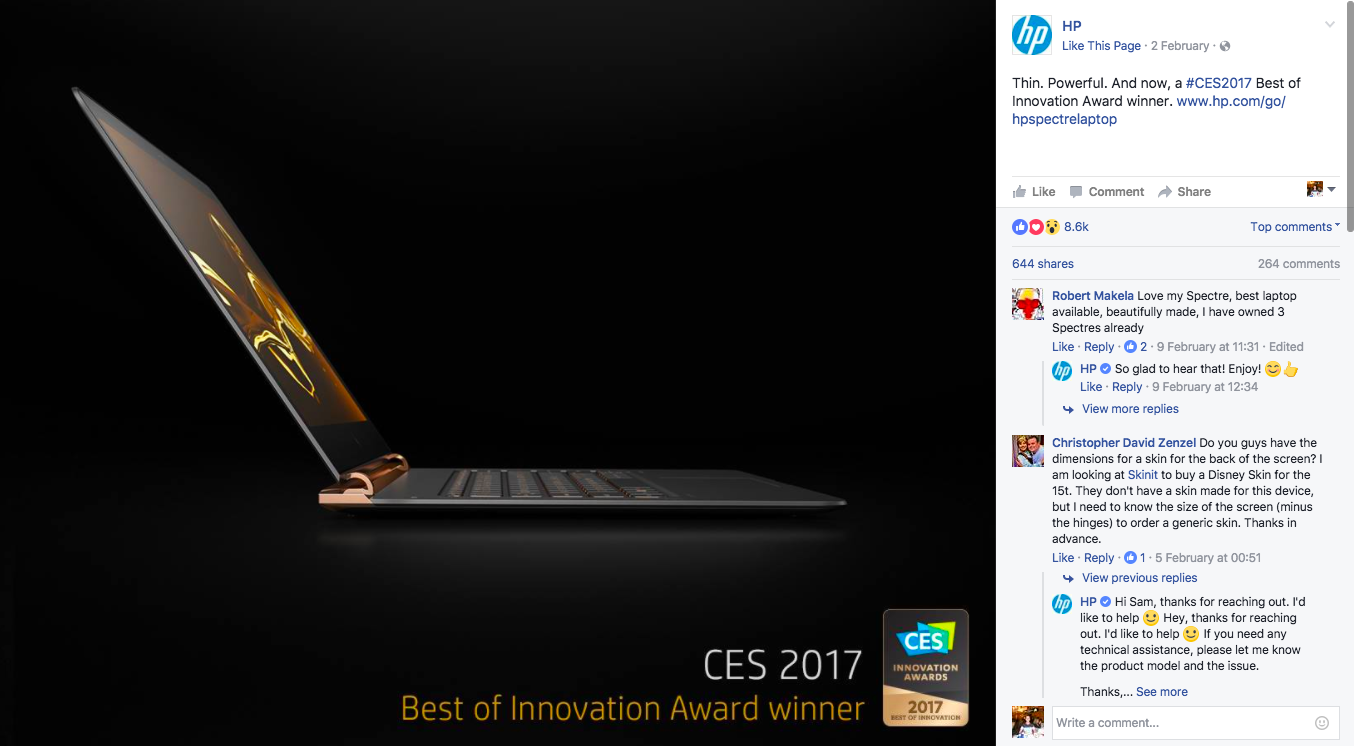
HP’s Facebook page, which has over four million followers, serves as a center for industry news, product marketing, entertaining films, and shareable graphics.
Additionally, the firm has run numerous successful advertisements on the platform. HP invited celebrities and influencers to create videos that encouraged people to push the boundaries of their creativity.
Notably, the company collaborated with Ellie Goulding and an animation studio to produce an interactive, acoustic version of Goulding’s song “Burn.” The collaboration was nominated for a 2016 Music Week Award for “Best Music and Brand Partnership.”
Additionally, HP partnered with influencers to market their convertible touchscreen laptop to Gen-Z customers. As a consequence, the brand increased recall by four points and buy consideration by seven points.
Key takeaway:
- Collaborating with influencers can help you build your audience. Customers are more interested in hearing from celebrities than in companies. That is why influencer marketing can be so effective. It enables you to connect with new customers and broaden your reach over the Internet.
Final Thoughts
Now that you’ve learned almost all there is to know about inbound marketing for technology firms; it’s time to enlist the assistance of your marketing team in developing your next campaign.
Utilize the advice and examples in this article to ensure they cover all areas and have the most excellent chance of achieving a competitive advantage in 2021.
